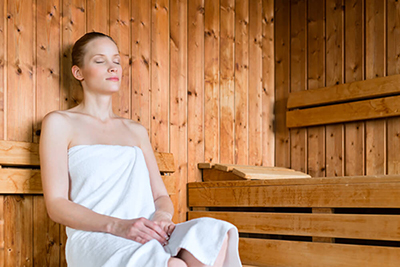That time of the year is upon us – the time to plan family gatherings, prepare sumptuous meals and possibly hibernate a little more than we should. Fall and winter mean football games on the couch, cold weather-related excuses for not working out, and extra dips into the communal snack bowl at the office. The holidays are a wonderful time of year, but for many of us, they represent the season for weight gain and unhealthy choices. Let’s look at nine healthy holiday tips to help set yourself up for an amazing New Year.
1. Clean Your Cupboards
Healthy eating is a big part of healthy living, so take a moment and rummage through your pantry for any unhealthy foods or anything you don’t plan on eating in the near future. Grab a few cardboard boxes and drop these unopened items off at a donation center that can convert unwanted food items into holiday meals for those in need. By eliminating junk food from your pantry, you’ll minimize the temptation to eat poorly.
2. Learn to Love Healthy Eating
Most holiday meals are famous for their decadent factor and most late-season menus don’t emphasize restraint when it comes to fat and calories. So take a moment and construct healthy eating alternatives that still tie in the holidays and their festivities, but without overdoing the calories. Substitute roasted sweet potatoes for mashed potatoes, steam fresh vegetables instead of creating a creamy casserole, and create mini pies in their own single-serving tins to encourage better portion control.
3. Sweat Out Your Toxins
One of the healthiest decisions you can make – and one of the best to integrate during the cold-weather months – is including sessions in a sauna each week. Whether you start off using the sauna at your local gym, or you move up to the ultimate in restorative sauna sessions with an infrared sauna, you’ll become healthier from the inside out. Infrared saunas remove a significantly greater amount of toxins from the body than standard “heat and moisture” saunas, while delivering a host of other health and wellness benefits, too.

4. Stay Hydrated
We all know that drinking water is an essential component to maintaining great health, but did you know that it is just as important to stay hydrated during fall and winter as it is during the peak of the summer? Cold air can suck the moisture from our bodies in no time, and heavy meals and salty foods can increase the need for fluid intake. Add to that a tendency to drink less water when it is colder outside, and you have a recipe for easy dehydration during the holidays. Add a new water bottle or two to your assortment and make sure you’re focusing on drinking at least 64 ounces of water per day.
5. Create a “Winter Exercise” Plan
It often isn’t as easy to exercise in the winter versus the spring or summer – especially when you factor in family gatherings, colder weather and frequent travel plans. So think about creating a unique winter exercise plan that ensures you have plenty of exercise on the roster, even when it’s cold outside. You can do hot yoga inside (doing yoga in an infrared sauna is incredibly beneficial in the winter!), take walks, go on group hikes or snowshoeing adventures, or anything else that ties in the holiday season.
6. Make Healthy Frozen Meals
We’ve already mentioned that eating healthier during the holidays can keep you fit, trim and happier during the fall and winter, but what if you don’t have the time to prepare dinner each night? After all, life still goes on during the holidays! To address this concern, create several meals ahead of time, freeze them in individual foil trays, and then stock them deep in the freezer. Label each one with a permanent marker so you know what you have, then simply pop a meal in the oven an hour or two before dinner time. You’ll have healthy meals right at hand, helping you and your family eat healthier with less fuss.
7. Complete Your Holiday Cards
What exactly does this have to do with making healthy choices during the holidays? For one, working on a project will give you an emotional boost and make you feel good about accomplishing something important. Next, reflecting on each holiday card recipient can reinforce the importance of friends and family in your life. Lastly, it simply feels good to get something holiday-related out of the way so you can focus on other important holiday activities.
8. Emphasize Your Mental Wellbeing
Creating a physical fitness action plan is certainly important, but the holidays are a great time to make mental health a priority, too. Many of us struggle in our own ways during this time of the year, and though the holidays seem bubbly and gregarious on the surface, it isn’t always the easiest time for everyone. The cold weather and shorter days can cause Seasonal Affective Disorder, or SAD, to develop. Spend time meditating, do yoga, relax in your sauna, seek the support of mental health professionals and therapists, or even simply schedule a time to talk with your friends. By working on your body and mind during the fall and winter, you may be less apt to make poor eating or behavioral decisions throughout the holidays.

9. Eat More Chocolate
Ok, wait… what? Haven’t we been talking about eating healthier? We have… but chocolate isn’t necessarily bad for you when eaten in moderation (especially when you aim for darker chocolates, like the 72% cacao varieties). Chocolate provides a bit of a mental lift and can be a good snack to take on the go. Just bring along a few small squares and you’ll be less tempted to indulge in those 1,000-calorie cinnamon rolls at the shopping mall.
Being healthy is a state of mind and not a temporary fling with clean eating and exercise. If you’re committed to improving the state of your mind, body and soul, keep the tips above in mind. Staying healthy during the holidays will be a breeze and you’ll enter the New Year with fewer items on your resolution list!
 Canada
Canada Australia
Australia New Zealand
New Zealand Malaysia
Malaysia China
China































